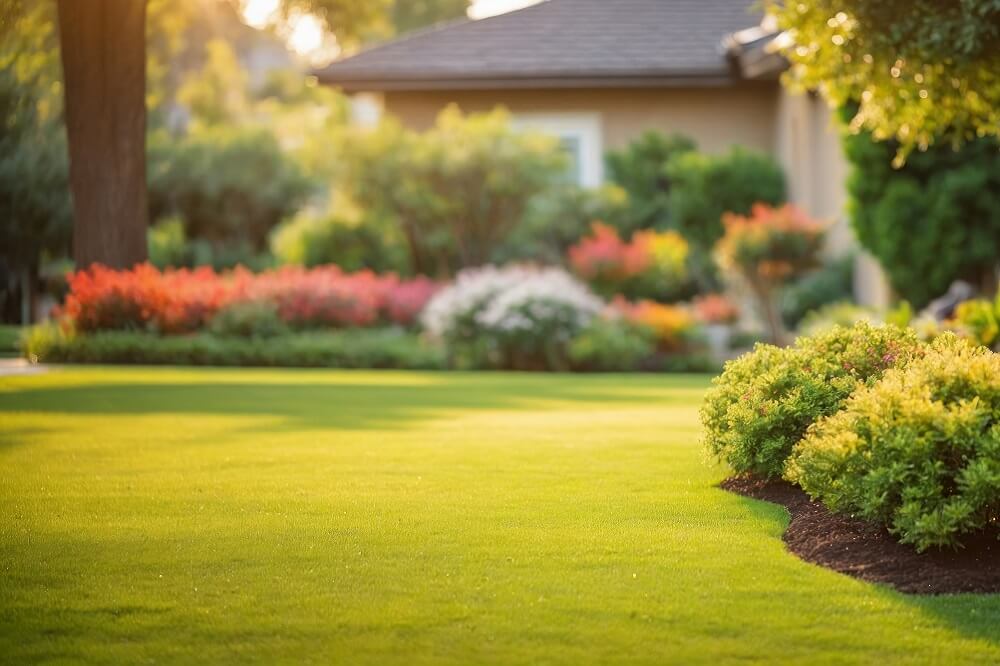
Separating the lawn from the flowerbed is crucial for both the aesthetics of the garden and easier care of the plants. Separating the two makes the garden more tidy and elegant. It also reduces the risk of uncontrolled overgrowth of grass into the flowerbeds, which could adversely affect the growth of other plants. Knowing, how to separate a lawn from a flower bedA clear border can be created to emphasise the individual character of each zone in the garden. The use of appropriate methods and materials is essential to ensure the durability and functionality of such a solution. Proper separation not only makes mowing and lawn care easier, but also protects bed plants from competition from the grass for water, nutrients and space. Therefore, when planning a garden, it is worth thinking carefully, how to separate the grass from the bed. Introducing such boundaries can significantly increase both the convenience and satisfaction of having a well-tended garden.
Wondering, how to separate a flowerbed from a lawn? A variety of methods are available that not only fulfil a practical function, but also an aesthetic one. The most popular solutions are:
By using these methods, you can be sure that your garden will not only look aesthetically pleasing, but will also become easier to maintain.
Garden edgings is one of the most effective solutions for separating the lawn from the flowerbed. The products available on the market vary in material, form and installation method, so they can be easily adapted to suit individual garden needs. Metal edging is characterised by exceptional durability and weather resistance, but can be more difficult to install. Wooden edging introduces natural charm, but is subject to natural decay, making it less durable. In contrast garden edging of plastic are robust, flexible and easy to install, allowing both straight and curved lines to be created.
The process of installing garden edging is relatively simple and requires no specialist tools. Firstly, dig a trench along the planned line of separation between the lawn and the flowerbed, and then place the edging in it, making sure that it is stable and evenly aligned. Anchors are used to secure them in place, which additionally prevent them from moving. When well installed, they provide not only an aesthetically pleasing appearance, but also an effective separation of garden zones, making lawn care and mowing easier. Choosing the right type of edging and installing it correctly will guarantee satisfaction and functionality for many years to come.
What you can still separate the lawn from the bed? Natural methods are the perfect solution for lovers of organic gardening, while bringing natural charm to the garden. What to separate the garden from the lawn in an ecological way? One popular solution is to use plants, such as densely planted shrubs, perennials or ornamental grasses, which create organic boundaries and provide a living barrier between the lawn and the flowerbed.
Fieldstones, pebbles and other natural elements can also be a great way to separate garden zones aesthetically and permanently. Laying stones along the border of a bed creates a clear and stylish line that not only prevents grass overgrowth, but also adds a unique character to the garden. An eco-friendly method is also to use edging made from recycled plastic. By choosing these methods, you can easily create a harmonious space in your garden that is both functional and aesthetically pleasing.
Separating the lawn from the flower bed yourself is a task that can be carried out successfully with a few practical tips. First of all, get the right tools such as a shovel, secateurs and a spirit level. A string or measuring tape will also be useful to help you mark the dividing line. The first step is to mark the boundary between the lawn and the flower bed. This can be done with a string to mark the cutting line. We then proceed to dig a groove about 10–15 cm deep along this line. We make sure that the groove is even and stable, which can be checked with a spirit level. Now it is time to place the selected edging, which will act as a border. When installing them, make sure they are evenly seated and well secured against movement. Finally, it’s a good idea to fill the groove with soil on both sides to set the border firmly in place. Avoid mistakes such as not digging the groove carefully or fitting the elements incorrectly, which can lead to grass overgrowth in the beds. With these steps you will take care of the aesthetics and functionality of your garden.
Examples of garden projects show, with what to fence off the lawn in a creative and aesthetically pleasing way. One such solution is to use bricks laid vertically along the lawn border, creating a rustic and elegant effect. Alternatively, plastic edging can be used in a minimalist style, which is almost invisible and blends in perfectly with modern garden arrangements. Another inspiration is the use of a mosaic of stones in different colours, which adds an artistic touch and sets the garden apart from others. One of the more innovative examples is the combination of different materials, such as wooden logs and stones, which not only separates the beds from the lawn, but also creates a unique texture and character to the space. It is also worth considering installing LED lighting along the borders to make the garden even more attractive after dusk. With these inspirations, everyone can find their perfect solution for this, how to separate a flowerbed from a lawn in a functional as well as an aesthetic manner.